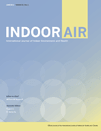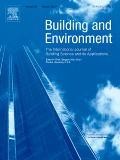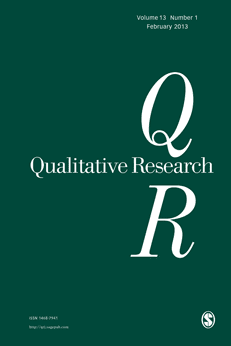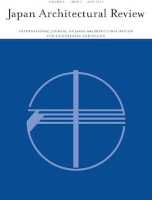
INDOOR AIR
Scope & Guideline
Innovating Indoor Standards for Global Well-being.
Introduction
Aims and Scopes
- Indoor Air Quality Assessment:
Research on the measurement, characterization, and evaluation of indoor air quality (IAQ) parameters, including particulate matter, volatile organic compounds, and other pollutants, to understand their sources and health implications. - Health Impact Studies:
Investigations into the health effects of indoor air pollutants, particularly focusing on vulnerable populations such as children, the elderly, and individuals with pre-existing health conditions. - Ventilation and Airflow Dynamics:
Studies exploring the role of ventilation systems, airflow patterns, and their impact on indoor air quality, including the effectiveness of various ventilation strategies in different environments. - Pollutant Source Identification and Control:
Research aimed at identifying sources of indoor pollutants, such as household products, building materials, and occupant activities, along with strategies for their control and mitigation. - Technological Innovations for IAQ Improvement:
Development and evaluation of new technologies, such as air filtration systems, air purifiers, and HVAC innovations, aimed at improving indoor air quality and reducing health risks. - Behavioral and Environmental Interactions:
Analysis of how occupant behaviors and environmental factors (e.g., temperature, humidity) interact to affect indoor air quality and overall comfort.
Trending and Emerging
- Impact of COVID-19 on Indoor Air Quality:
A significant increase in research related to COVID-19 transmission dynamics in indoor environments has emerged, with a focus on aerosol transmission, ventilation effectiveness, and disinfection strategies. - Machine Learning and Predictive Analytics:
The use of machine learning and predictive analytics in assessing and managing indoor air quality has gained traction, facilitating more accurate exposure predictions and personalized air quality management. - Holistic Approaches to IAQ Improvement:
There is a growing trend towards holistic interventions that consider multiple factors influencing indoor air quality, including behavioral, technological, and environmental aspects. - Health Disparities and Vulnerable Populations:
Research focusing on health disparities related to indoor air quality among vulnerable populations has become increasingly prominent, highlighting the need for targeted interventions. - Climate Change and Indoor Air Quality:
Emerging studies examining the interplay between climate change, energy use, and indoor air quality are on the rise, reflecting concerns about sustainability and public health.
Declining or Waning
- Traditional Indoor Pollutant Studies:
Research on traditional pollutants, such as carbon monoxide and basic particulate matter, has seen a decrease, possibly due to the increased focus on more complex interactions and emerging pollutants. - Static Models of Indoor Air Quality:
There has been a decline in studies utilizing static models for assessing indoor air quality, as the field shifts towards dynamic modeling that accounts for real-time variations and interactions. - Focus on Single Pollutants:
Research has increasingly shifted from studying single pollutant effects to examining the cumulative effects of multiple pollutants and their synergistic interactions on health. - Generalized Ventilation Guidelines:
The focus on generalized ventilation guidelines has diminished as research emphasizes the need for context-specific strategies tailored to different types of indoor environments.
Similar Journals

BUILDING AND ENVIRONMENT
Exploring the synergy between construction and environmental stewardship.BUILDING AND ENVIRONMENT, published by Pergamon-Elsevier Science Ltd, stands as a premier journal in the fields of Building and Construction, Civil and Structural Engineering, Environmental Engineering, and Geography, Planning, and Development. With its ISSN 0360-1323 and E-ISSN 1873-684X, this esteemed publication has garnered significant acclaim, achieving a Q1 ranking in multiple categories for 2023, reflecting its influential role in advancing research and innovation within these domains. Spanning from 1976 to 2024, the journal invites contributions that explore the intersection of sustainable design, energy efficiency, and urban development, addressing critical issues faced in modern architecture and environmental impact. Although it does not offer open access, its comprehensive articles and reviews are pivotal for researchers, professionals, and students dedicated to creating sustainable built environments. Situated in the United Kingdom, the journal serves as a vital resource for those aiming to contribute to the knowledge base in this rapidly evolving ecologically focused field.

Aerosol and Air Quality Research
Uncovering the Dynamics of Air QualityAerosol and Air Quality Research, an esteemed open-access journal published by the Taiwan Association of Aerosol Research (TAAR), serves as a vital platform for advancing knowledge in the fields of environmental science, specifically focusing on aerosol dynamics and air quality issues. Since its inception in 2001, this journal has consistently contributed to research within its disciplines, achieving an impressive ranking within the Q2 category in both Environmental Chemistry and Pollution as of 2023. With a commendable standing in Scopus rankings—35th out of 167 in Environmental Science & Pollution and 36th out of 147 in Environmental Chemistry—it continues to attract rigorous research contributions that address pressing environmental challenges. The open-access model fosters greater visibility and accessibility of high-quality research, making it an invaluable resource for researchers, professionals, and students alike who seek to understand and mitigate the effects of atmospheric pollutants. Based in Taiwan, this journal plays a crucial role in disseminating impactful research that shapes policy and scientific inquiry globally.

Aerosol Science and Engineering
Innovating Solutions for Environmental and Human HealthAerosol Science and Engineering is a pioneering journal dedicated to the interdisciplinary study of aerosols, their formation, properties, and their impact on environmental and human health. Published by Springer Nature, this journal aims to advance our understanding of aerosol behavior in various contexts, including atmospheric science, industrial applications, and pollution mitigation. With an ISSN of 2510-375X and an E-ISSN of 2510-3768, it benefits from a comprehensive Open Access model that ensures wide dissemination of research findings. Aerosol Science and Engineering is indexed in prestigious databases, holding a respectable Q3 quartile ranking in fields such as Environmental Chemistry and Materials Science for 2023. The journal’s scope spans from 2017 to its future convergence in 2024, making it a critical resource for researchers, professionals, and students alike who are striving to understand and innovate in the realm of aerosol science. Each published article contributes to the collective knowledge needed to address pressing environmental challenges and drive sustainable technological advancements.

Atmosphere
Bridging Science and Policy in Atmospheric ResearchAtmosphere is a premier open-access journal dedicated to the field of atmospheric sciences, published by MDPI since 2010. With an E-ISSN of 2073-4433, the journal has established itself as a significant platform for the dissemination of research on atmospheric processes, climate change, and environmental dynamics. Based in Switzerland, the journal has garnered impressive recognition within the academic community, currently ranked in the 3rd quartile for Atmospheric Science and the 2nd quartile for Environmental Science (miscellaneous) as of 2023. Notably, it holds a commendable Scopus rank, emphasizing its impact with a 69th percentile standing in its category. Atmosphere aims to foster innovative research and comprehensive reviews that contribute to the understanding of air quality, climate policy, and environmental sustainability. Its open-access model not only supports the global sharing of knowledge but also enhances visibility and engagement among researchers, professionals, and students alike, making it an essential resource for anyone invested in the study of our planet's atmosphere.

INDOOR AND BUILT ENVIRONMENT
Elevating Standards for Indoor Environmental QualityINDOOR AND BUILT ENVIRONMENT is a prestigious peer-reviewed journal published by SAGE PUBLICATIONS LTD, focusing on the interdisciplinary fields of indoor environmental quality, human health, and sustainable built environments. With an ISSN of 1420-326X and an E-ISSN of 1423-0070, the journal has been a significant contributor to research and knowledge dissemination since its inception in 1992, continuing through to 2024. Positioned in the Q2 category of public health, it ranks impressively at #122 out of 665 in the Scopus metrics for Medicine, showcasing its influence and relevance in the field with an 81st percentile standing. While the journal does not currently offer open access options, it remains a vital resource for researchers, professionals, and students eager to explore the critical interplay between indoor environments and public health. With its comprehensive coverage and a commitment to high-quality research, INDOOR AND BUILT ENVIRONMENT plays an essential role in advancing knowledge and practices that contribute to healthier living and working spaces.

Qualitative Research
Fostering critical dialogue in the qualitative research community.Qualitative Research, published by SAGE Publications Ltd, is a premier journal that has been at the forefront of the qualitative methodology discourse since its inception in 2001. With an ISSN of 1468-7941 and an E-ISSN of 1741-3109, the journal has established itself as a crucial resource for researchers and practitioners engaged in the fields of History and Philosophy of Science, as well as Social Sciences, where it enjoys a notable Q1 ranking. With an impressive Scopus ranking of #5 in Arts and Humanities and #22 in Social Sciences, this journal aims to disseminate innovative empirical research and theoretical discussions that enrich qualitative inquiry. Researchers, professionals, and students benefit from its rigorous peer-reviewed articles that address critical topics, challenges, and advancements within qualitative research paradigms. Although the journal is not openly accessible, its significant impact factor and distinguished editorial boards ensure that it remains an essential reference for qualitative scholars seeking to deepen their understanding and contribute to the evolution of research methodologies.

Japan Architectural Review
Exploring the intersection of architecture and environmental engineering.Japan Architectural Review is a premier open-access journal published by WILEY, dedicated to advancing the fields of architecture, environmental engineering, and modeling and simulation. Since its inception, this journal has emerged as a critical platform for disseminating innovative research, offering insights into the latest trends and challenges facing the built environment and sustainability practices. With an impact factor reflecting its growing influence, especially in the Q2 category of Architecture and notable rankings in environmental engineering and modeling disciplines, it serves as an essential resource for researchers, professionals, and students alike. The journal's commitment to open access since 2018 has further enhanced its reach, making high-quality research accessible to a global audience. Spanning an important timeline from 2019 to 2024, the Japan Architectural Review facilitates a collaborative discourse among scholars, encouraging innovative solutions to contemporary architectural challenges.

WATER AIR AND SOIL POLLUTION
Elevating research on pollution for a healthier world.Water Air and Soil Pollution is a leading peer-reviewed journal published by Springer International Publishing AG, focusing on the vital fields of environmental sciences, ecological modeling, and pollution management. Since its inception in 1971, the journal has contributed significantly to advancing knowledge in the interdisciplinary realms of Water Science and Technology, Environmental Chemistry, and Environmental Engineering. With an impressive history, the journal currently holds a Q2 quartile ranking in several categories, reflecting its high impact and relevance in these essential areas of research. Its rankings—such as #95 in Environmental Science: Water Science and Technology—illustrate its standing in the academic community. Researchers and practitioners alike can access a wealth of studies and reviews that aim to address pressing environmental concerns and foster sustainable practices, although the journal is not Open Access. Located in Switzerland, Water Air and Soil Pollution continues to be a critical resource for those dedicated to understanding and mitigating pollution, making it an indispensable tool for anyone engaged in ecological and environmental research.

ATMOSFERA
Your Gateway to Atmospheric Science ExcellenceATMOSFERA is a prestigious journal published by CENTRO CIENCIAS ATMOSFERA UNAM, dedicated to advancing the field of Atmospheric Science. With an ISSN of 0187-6236 and an E-ISSN of 2395-8812, this bilingual journal has been a vital resource for researchers since its inception in 1988. Located in Mexico City, the journal serves as a platform for high-quality original research, reviews, and case studies that explore various atmospheric phenomena, climate issues, and environmental challenges. Although currently categorized in the Q4 quartile of Atmospheric Science, ATMOSFERA aims to contribute to the growing body of knowledge in the field and improve its ranking over the next few years, emphasizing rigorous scientific inquiry and fostering collaboration among scholars. Its accessibility and commitment to open communication make it an essential reference for professionals and students striving to understand and address complex atmospheric dynamics.

Journal of Korean Society for Atmospheric Environment
Pioneering research for a better atmospheric future.Journal of Korean Society for Atmospheric Environment is a leading platform for innovative research in the fields of environmental chemistry, engineering, and pollution science. Published by the Korean Society for Atmospheric Environment, this journal is dedicated to disseminating high-quality research findings that address the crucial challenges of atmospheric environment management and sustainability. The journal operates from South Korea and features a diverse range of articles exploring contemporary environmental issues, including air quality assessment and pollutant impact studies. Although it is not an open-access journal, it maintains a notable presence in the academic community with its categorization in Q3 in Environmental Engineering and Q4 in Environmental Chemistry, as of 2023. With its focus on interdisciplinary research, the Journal of Korean Society for Atmospheric Environment serves as an essential resource for researchers, professionals, and students interested in advancing knowledge and practices related to atmospheric environmental sciences.